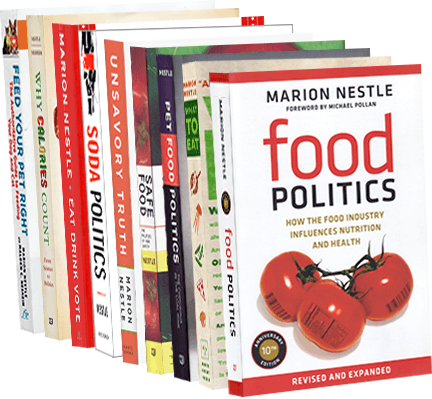New books take a fresh look at public health
If I were teaching public health nutrition right now, here’s what I’d want students to read:
Geof Rayner and Tim Lang, Ecological Public Health: Reshaping the Conditions for Good Health, Routledge Earthscan, 2012.
Our case is that public health is an interdisciplinary project, and not merely the preserve of particular professionals or titles. Indeed, one of the themes of the book is that public health is often improved by movements and by people prepared to challenge conventional assumptions and the status quo…In these cynical academic times, when thinking is too often set within narrow economistic terms—What can we afford? What is the cost-benefit of health action?—and when the notion of the ‘public’ is often replaced by the ‘individual’ or the ‘private,’ this book offers an analysis of public health which is unashamedly pro bono publico, for the public good.
David Stuckler and Karen Siegel, eds. Sick Societies: Responding to the Global Challenge of Chronic Disease, Oxford University Press, 2011.
Sick Societies argues that we are building environments that are poorly designed for our boides: we create societies where tobacco, alcohol, and foods containing high levels of salt, sugar, and fats are the easiest, cheapest, and most desirable choices, while fruits, vegetables, and exercise are the most expensive, inaccessible, and inconvenient options. The rise in chronic diseases is the result of a model of societal development that is out of control: a model that puts wealth before health.
Wilma Waterlander, Put the Money Where the Mouth Is: The Feasibility and Effectiveness of Food Pricing Strategies to Stimulate Healthy Eating, Vrije Universiteit, Amsterdam, 2012.
This one is for policy wonks and change agents. This is Waterlander’s doctoral dissertation done as a published book but it is written clearly and forcefully. Her conclusions:
The studies presented in this thesis show that the healthy choice is the relatively expensive choice; that price fundamentally affects food choice and may even form a barrier for low SES consumers in selecting healthier foods. These findings make pricing strategies a justifiable tool to stimulate healthier choices…making healthier foods cheaper was found to be the most feasible pricing strategy to implement.



